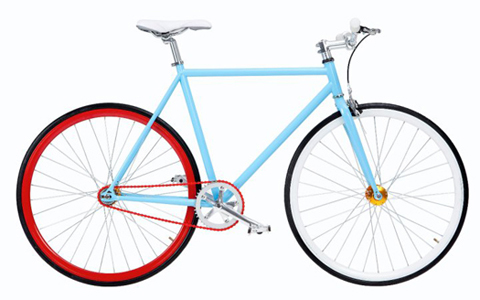The following is a response-gone-wild to my fellow Reed anthro alum and bike critic counterpart Elly Blue in Portland, Oregon. She just wrote a nice piece on gender equity and cycling, arguing that economic inequities between men and women play a large role in why women don’t bike more
—
Great post, Elly. Thanks for shining some more critical light on this important issue. I’m happy to hear some new thinking beyond the fashion and safety issues. Here are some thoughts I have on the issue of why more women don’t bike in the US.
In the Netherlands, male cycling rates drop around the time people get families but female rates increase. Overall rates are about 45% men and 55% women. Here in Denmark, cycling rates decrease for men and women around child raising time. Rates here are 45% women and 55% men. This leads me to suspect that Denmark actually has better gender parity despite fewer women biking. This is based on a hypothesis that men may do more of the heavy lifting in Denmark when it comes to picking up and dropping off kids than do their Dutch counterparts.
Also, the distance to grocery stores may vary. In Copenhagen, there are usually about 5-10 grocery stores within easy walking distance of any apartment. The daycare (or bus pick up) is usually within a km or two of home. Plus, we have a wide variety of cargo bicycles for kids and bigger loads. When I lived in Amsterdam it was similar at least on the grocery front. Not sure about daycares and schools.
Another key point that needs to be mentioned in this is that in Copenhagen, the vast majority of cyclists are only traveling 2-5 km (1-3 miles). Commute distances over 5 km are less common here and few make it much over 10 km. You hardly break a sweat in a 10-20 minute bike ride. Plus, few people wear a helmet (compared to the US, not historical rates in Copenhagen), which makes things like Copenhagen Cycle Chic much more plausible.
On the economy point, I suspect it’s not the cost of the bicycle. A used bike in the US is easily 2-3 times cheaper ($1-200) than a lower quality used bike in Denmark ($300+). If pretty much every American can afford a car- even a beater- they can certainly afford a fancy bike and all the expensive (and unnecessary) ‘lifestyle’ goodies that they think they need to ride it.
In most US cities it’s the rich, yuppies living in the urban centers riding bikes. But in most of the world’s developing countries, it’s the rural poor who can’t afford anything else who bike. How can we then say that biking is somehow inherently an affordability issue for the rich or the poor? Local context and culture plays a huge role here.
Economy plays a big role in cycling, but I’m not sure it’s the reason women in particular don’t cycle. If it did, I don’t understand the logic that they can’t afford a $100-1000 bicycle but aren’t too poor to afford the average $8,500/year for a car.
I think it’s more likely that what people can’t afford is not the bike, but an apartment in the city center to live within short range cycling distance of all the things they need to accomplish all of these activities. This is particularly true once they have kids and are trying to fulfill the suburban family dream.
Now, fulfilling the strong social narrative of ‘being a good mother’ and whether you can do that on a bike or while living in the city is a different matter worth unpacking. Even here in Copenhagen, many of the people I have interviewed suggest that to be a ‘good parent’ you have to get a car, and you should move to the suburbs. That’s in Copenhagen. Cycle capital of the world and all whatnot.
There are those here too bucking the trend, which is easier to do, but they are still bucking the trend and have to jump through some hoops- most notably the high cost of finding an apartment that is ‘big enough’ for kids. Most of them just hold off for a few years until the kids get older and then have to eventually move out anyway. The cargo bike may just delay the seemingly inevitable.
I suspect there are also a lot more social pressures that poor people in the US face to get a car to demonstrate that they have been “successful” to their peers, whereas the educated elite more likely show off their status by being “smart/eco-friendly/health conscious enough” to choose to ride a bicycle.
Here in Copenhagen, which values modesty and social equity, standing out and thinking you are above others is a no-no. People prefer to be seen as ‘the kind of person who would ride a bicycle’. The kind of person who doesn’t think of themselves as being too big and above everyone else. Driving a hummer or big SUV in Copenhagen would likely raise scorn and eyebrows, which explains why I don’t think I’ve seen either in the past 3 years here. Even the crown prince and prime minister both prefer to be seen on bikes.
I think it’s pretty unlikely we can change American culture to be more modest, pragmatic and equal. But perhaps we can leverage the tropes we have like freedom, independence, and self-reliance to push bicycling further in the US. And in both cases, we will have to figure out how to make affordable, family friendly cities and reframe ‘the good parent’ and the ‘successful adult’ into one who rides a bike.









